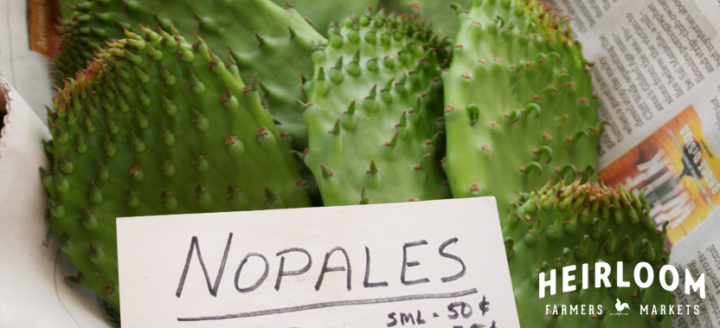Southwest Heirloom Foods
 In the desert Southwest the traditional heritage food sources have been either grown in the desert under the driest of conditions or forged and found in the desert. Today, we are looking back at the more traditional methods of growing and harvesting these plants that are rich in our culture but also looking ahead at the amount of natural resources that are readily available to us. Amaranth, prickly pear, nopales, tepary beans, cholla buds, native mesquite and many native squash varieties are now easily sourced and available. What do you do with these vegetables? I will merely attempt to introduce you to some of our traditional heritage foods.
In the desert Southwest the traditional heritage food sources have been either grown in the desert under the driest of conditions or forged and found in the desert. Today, we are looking back at the more traditional methods of growing and harvesting these plants that are rich in our culture but also looking ahead at the amount of natural resources that are readily available to us. Amaranth, prickly pear, nopales, tepary beans, cholla buds, native mesquite and many native squash varieties are now easily sourced and available. What do you do with these vegetables? I will merely attempt to introduce you to some of our traditional heritage foods.
Prickly pear is generally harvested during the late summer months when the tunas are bright or dark red in color, the ruby pear or tunas as they are called can be harvested easily with tongs, just gently twist the fruit off into a bucket. The fruit as well as the pads have many small and large spines. Once the tunas are harvested, using a heavy glove-usually gloves that are made of hard leather to clean off the spines, the smaller spines are burnt with a hot grill or torch so that they are easily rubbed off. Once the spines are rubbed off the fruit is washed, sliced and put through a mill or presses for it’s rich juice. The pressing of the fruit helps with containment of the seeds. You will find at our markets fresh prickly pear lemonade, juice, jelly, tea and granola.
Cholla buds are one desert delicacy that are worth noting. Usually harvested in late April, early May the buds are collected prior to the bloom of the cactus. The buds come off the tip easily but are filled with prickly spines. Many of the larger spines can be brushed off however, the smaller spines must be picked off with tweezers. The buds are thoroughly picked over and continuously rubbed so that the thorns or spines are gently rubbed off. The buds can be dehydrated or frozen for year-round usage, they hydrate easily and quickly absorb the marinates that they are immersed in. Recipes for cholla buds can be found on TOCAonline website.
Amaranth is now available at the markets as the beautiful addition to market blooms however, many of us Tucsonans quickly discount it as a pesky weed. Amaranth is an ancient grain that grows easily in and around farm land as well as backyards here in the Southwest. With all the rain we have been experiencing during these wet monsoons, I suspect that you will spot Amaranth growing everywhere. Amaranth greens are easily harvested and cooked, and tastes very much like mild spinach.
Find our nopales and cholla buds vendor most Saturdays at the Oro Valley Farmers Market.